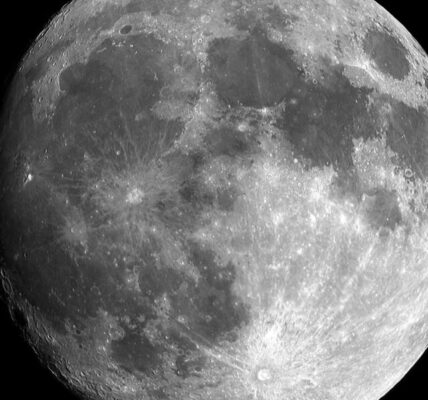Black Hole Awakening: Astronomers Witness a Sleeping Giant Come Alive
Have you ever looked up at the night sky and wondered about the mysteries that lurk in the vast darkness? But a recent discovery by astronomers has shed new light on these enigmatic objects, and it’s a story that’s both awe-inspiring and strangely comforting.
For the first time ever, scientists have directly observed a black hole awakening from its slumber and bathing its surrounding galaxy in a brilliant light show. This incredible event took place a staggering 300 million light-years away, so there’s no need to worry about any immediate danger to Earth.
But what exactly does it mean for a black hole to “wake up”?

© ESO, M. Kornmesser
A Galactic Light Show
Imagine a giant vacuum cleaner lurking in the heart of a galaxy. That’s essentially what a black hole is – a region of spacetime with such intense gravity that anything, from gas and dust to even stars, can be pulled in and disappear forever. But most of the time, these supermassive black holes are relatively quiet, passively feeding off the surrounding material.
However, in this recent case, something dramatic happened. The galaxy, previously unremarkable, suddenly began to shine much brighter than ever before. Astronomers at the European Southern Observatory (ESO) in Germany were the first to witness this cosmic light show. Using powerful telescopes, they detected various types of radiation emanating from the galaxy’s center, where the black hole resides.
Black Holes: Giants That Can Sleep and Feast
Our own Milky Way galaxy is also believed to harbor a supermassive black hole at its core. These black holes are invisible because of their immense gravity. But here’s the interesting thing: black holes aren’t always actively gobbling up everything around them. They can exist in a relatively dormant state for long periods.
The most likely explanation for the outburst of light, according to the researchers, is that the black hole has finally awakened and begun to feast on a fresh supply of gas and dust within the galaxy.
Catching a Black Hole in the Act
Think of it like a giant furnace suddenly reignited. As the black hole devours surrounding material, it releases tremendous energy in the form of radiation. This is what caused the galaxy to flare up so dramatically. Dr. Claudio Ricci, another researcher involved in the study, puts it vividly, “These enormous black holes are usually like sleeping giants. But in this case, we were lucky enough to witness a supermassive black hole waking up and starting to eat again, which made it incredibly bright.”
A Window into the Black Hole’s Feeding Frenzy
It provides astronomers with a rare opportunity to study a black hole’s “feeding frenzy” in real-time. By analyzing the different types of radiation being emitted, scientists can learn more about the black hole’s behavior, the rate at which it’s consuming matter, and how it interacts with its environment.
Beyond the Spectacle: What This Means for Science
While the dramatic awakening of a black hole might sound like something out of science fiction, the reality is far less threatening. This event occurred so far away that it poses no danger to us on Earth. However, the scientific implications are profound.
By studying this “awakening,” astronomers can gain valuable insights into the lifecycle of black holes and the role they play in the evolution of galaxies. It’s like watching a crucial missing piece of the cosmic puzzle fall into place.
The discovery also opens doors to further exploration. Now that scientists have a better understanding of how to identify black holes transitioning from inactive to active states, they can potentially search for similar events in other galaxies.
The Universe: A Place of Constant Change
The universe is a dynamic place, filled with objects that are constantly evolving. Black holes, once thought to be simply cosmic vacuum cleaners, are now revealed to be complex entities with periods of both slumber and activity. This discovery reminds us that there’s still so much to learn about the cosmos, and with each new observation, we get a little closer to unlocking its secrets.
ALSO READ:




